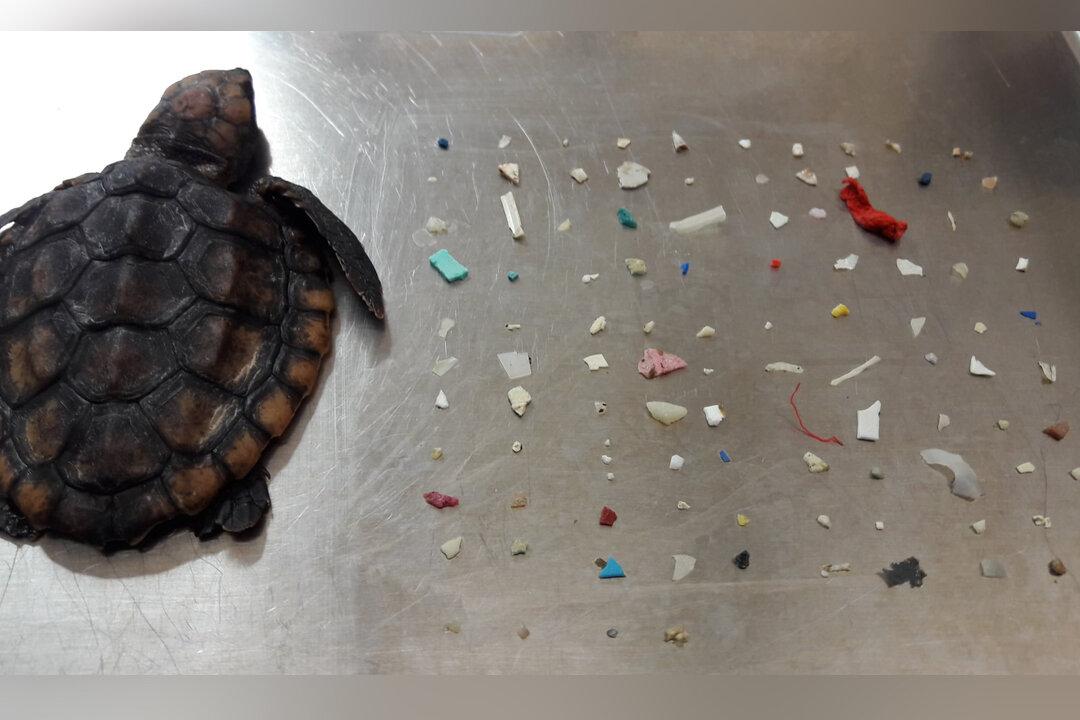A tiny sea turtle died after eating 104 small pieces of plastic. It washed ashore in Florida sending a sad reminder that oceans need to be kept “plastic-free.”
Gumbo Limbo Nature Center shared a picture on Facebook on Oct. 2 of the turtle with 104 pieces of plastic removed from its tiny body.





